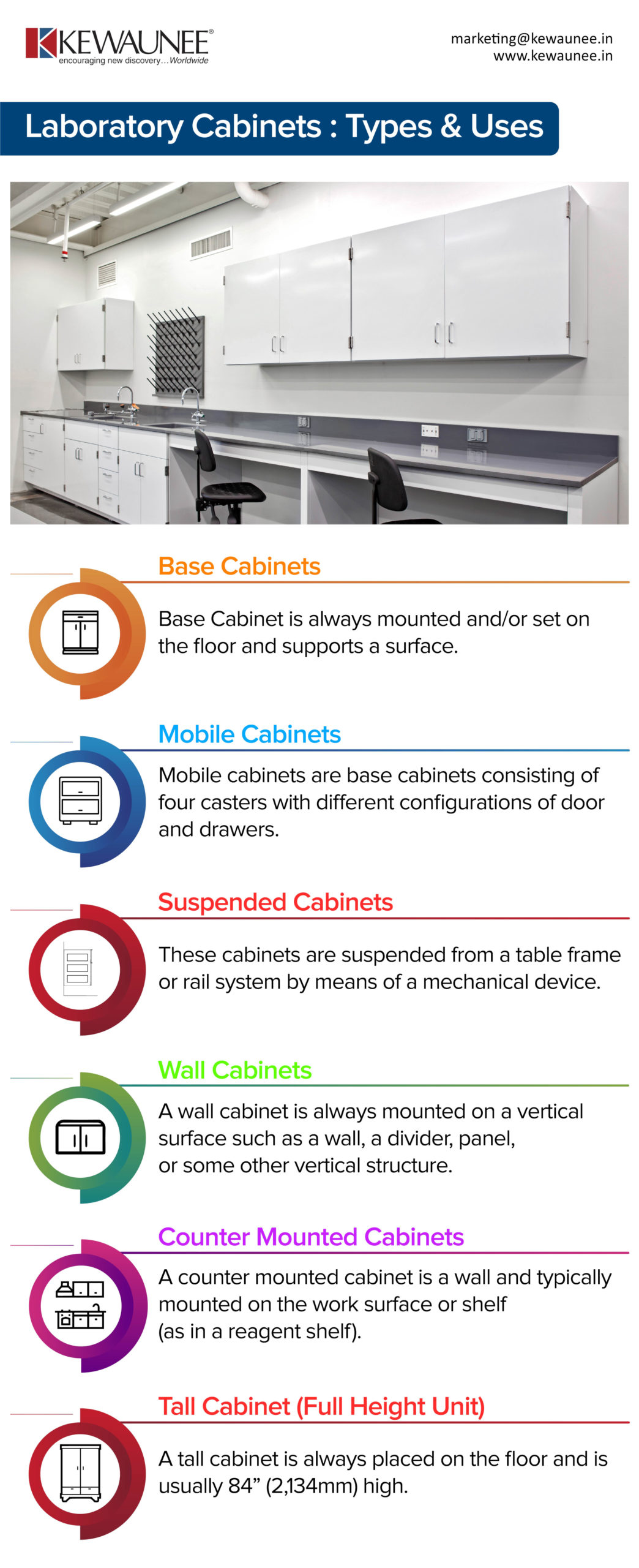Laboratory Cabinets: Types & Uses
Laboratory cabinets are commonly found in a lab and used for storage. Depending on the storage needs the cabinets can be general purpose cabinets, chemical storage cabinets & flammable safety cabinets, or mobile cabinets for easy movement.
In this blog, let’s explore the various types of general-purpose cabinets in a laboratory:
- Base Cabinets: A base cabinet is always mounted and/or set on the floor and supports a surface. The base cabinet may or may not have a top and consists of two ends – a back, and a face. The face may be open, to access the storage area, or may be outfitted with one or more drawers and/or door(s).
- Mobile Cabinets: Mobile cabinets are base cabinets consisting of four casters with different configurations of door and drawers. A mobile cabinet can consist of an interlocking drawer device, gang locking mechanism, anti-tip devices, and counterweight for safety applications.
- Suspended Cabinets: These cabinets are suspended from a table frame or rail system by means of a mechanical device. The suspended cabinet is designed to be repositioned or removed. A cabinet storage device consists of different configurations of doors and drawers.
- Wall Cabinet: A wall cabinet is always mounted on a vertical surface such as a wall, a divider, panel, or some other vertical structure. A wall cabinet is usually less than 48” (1,219mm) high. A wall cabinet consists of a back, a top, bottom, and a face. The face may be open to access the storage area or may be outfitted with one or more door(s). The wall cabinet usually does not include a drawer.
- Counter Mounted Cabinet: A counter mounted cabinet is a wall and typically mounted on the work surface or shelf (as in a reagent shelf). The height of the counter mounted cabinet is usually 48” (1,219mm).
- Tall Cabinet (Full Height Unit): A tall cabinet is always placed on the floor and is usually 84” (2,134mm) high. The tall cabinet consists of a top, bottom panel, a back, and a face. The face may be open to access the storage area or may be outfitted with one or more drawers and/or door(s).
Ref: SEFA
Comments are closed.











